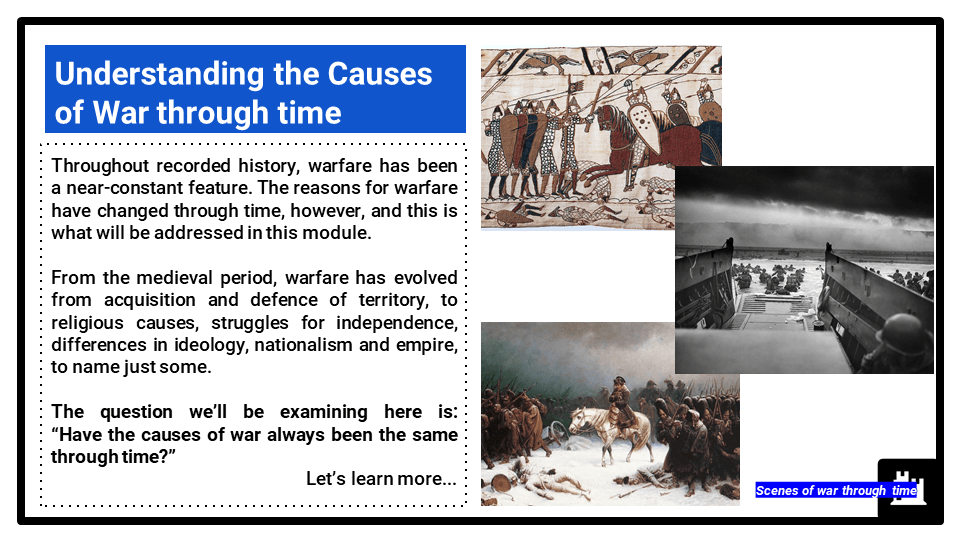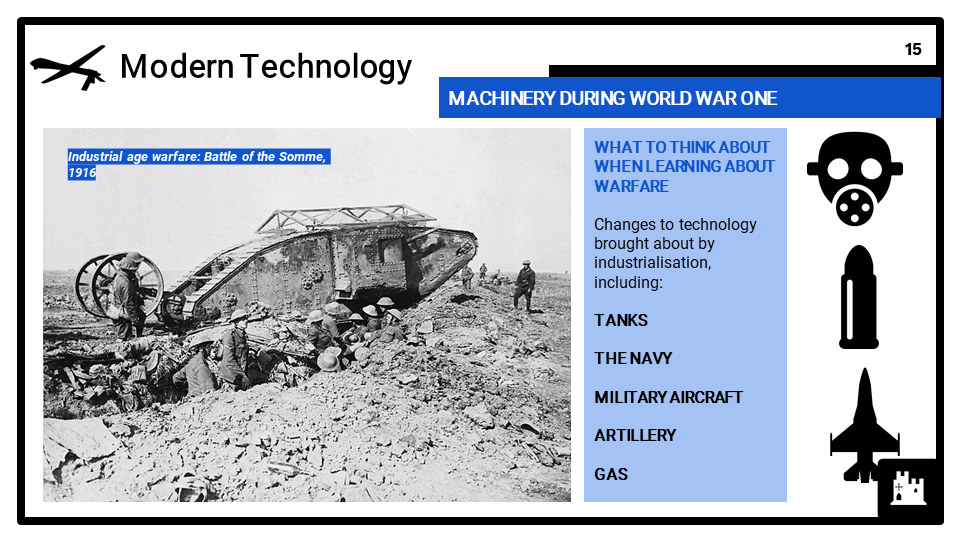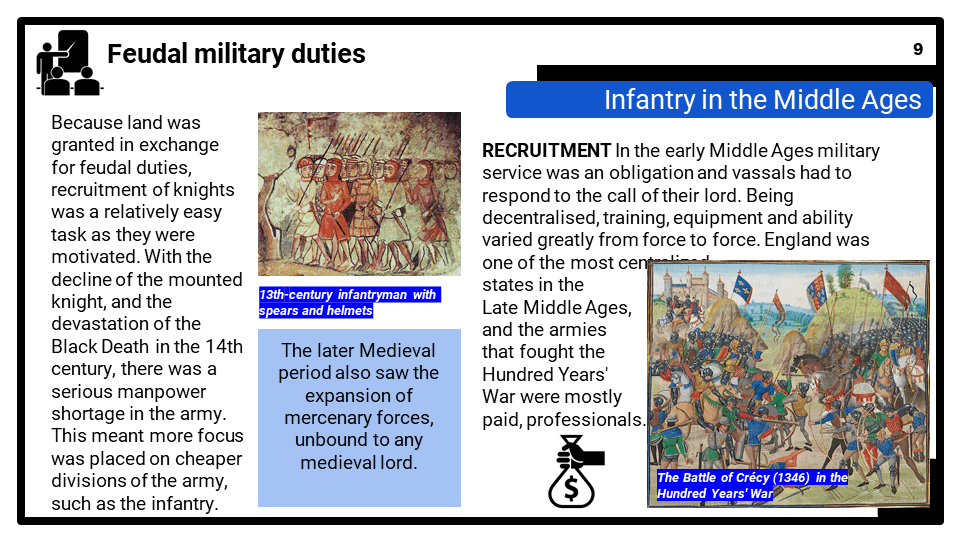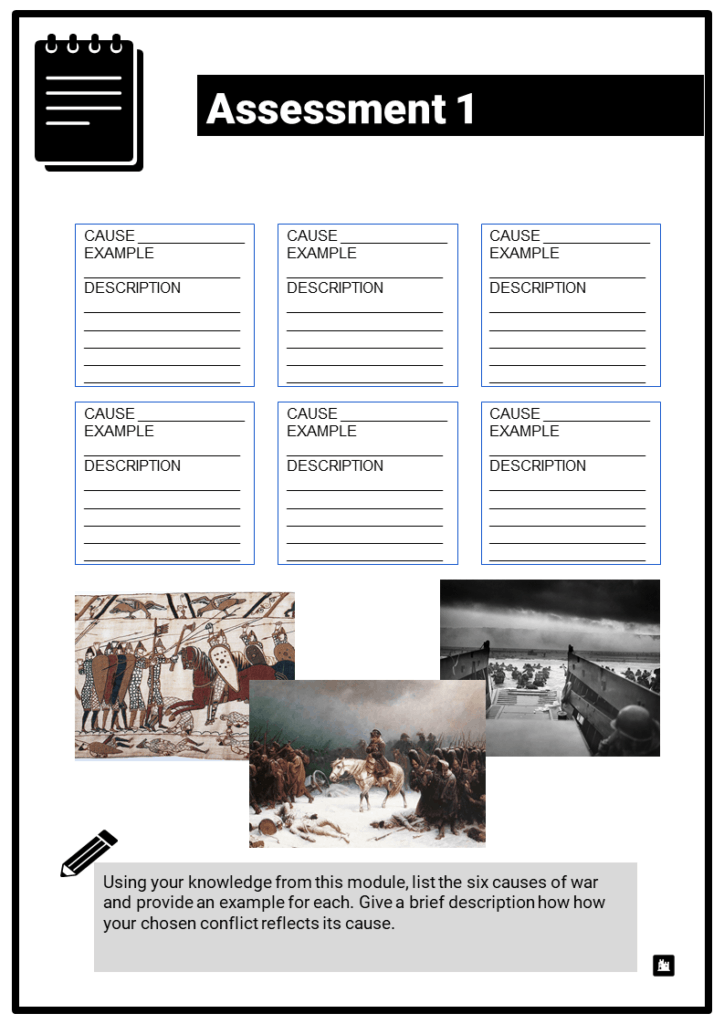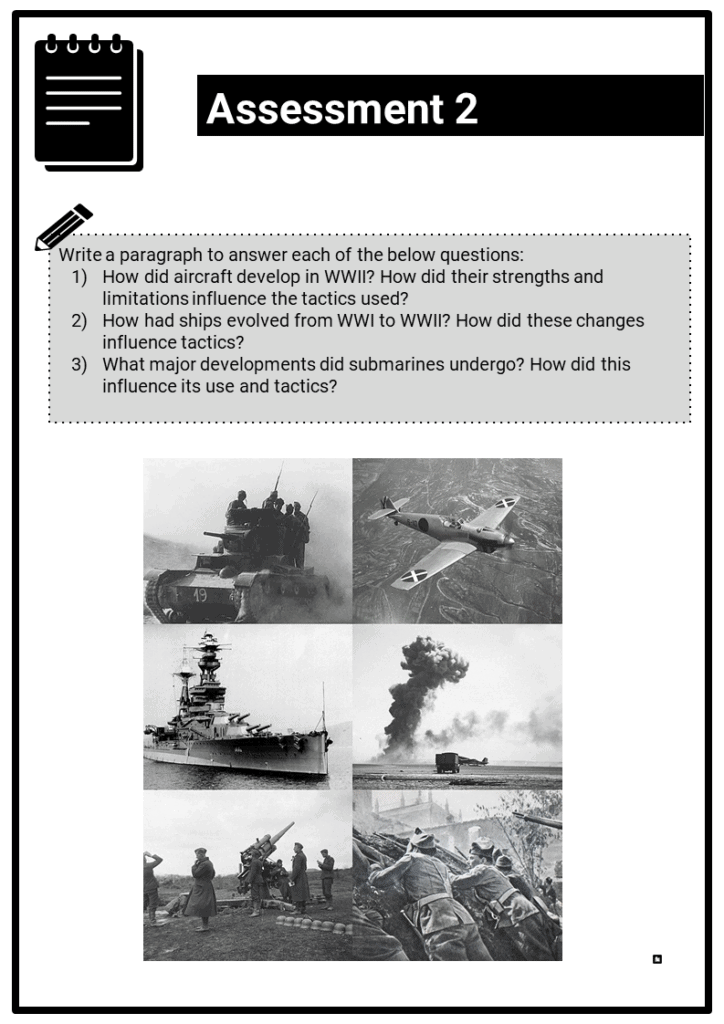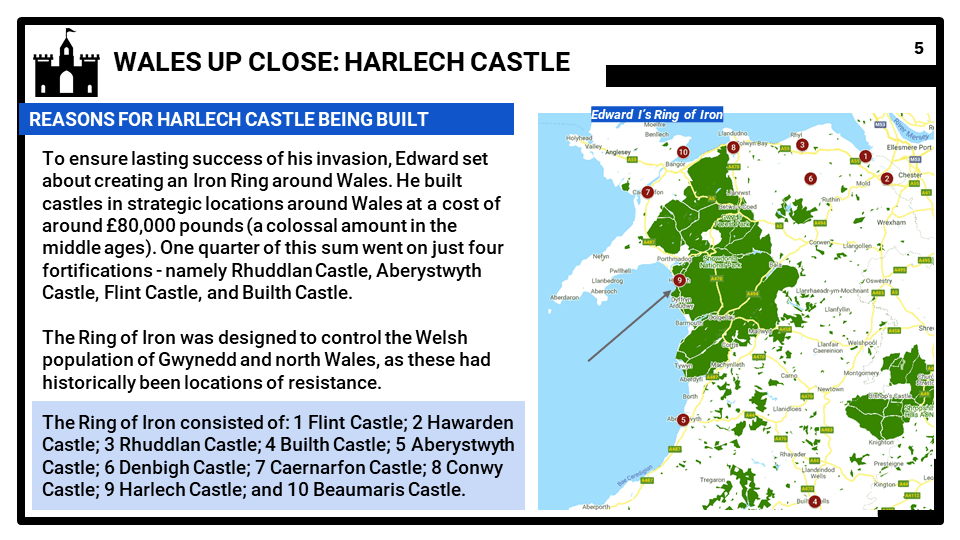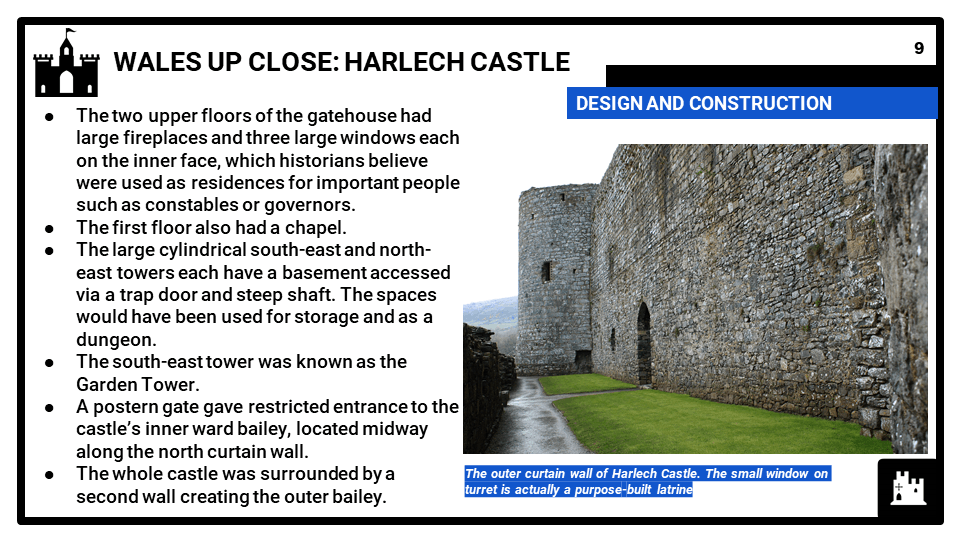Teach any WJEC module : The Development of Warfare, c.1250 to the present day, no prep needed!
Do you want to save dozens of hours in time? Get your evenings and weekends back? Be fully prepared to teach any WJEC GCSE topic?
Every WJEC topic is covered, and each module comes complete with:
Thematic Studies from a broad historical perspective
Written examination: 1 hour 15 minutes 30% of qualification 60 marks (plus 4 marks for spelling, punctuation and grammar and the use of specialist language)
Learners study one Thematic Study from four options in total. The thematic studies provide learners with the opportunity to study history in breadth and consequently understand the changing nature of developments and issues associated with particular periods within the context of British history. In this unit, the impact of change on Wales should be highlighted within the broader historical context. The thematic studies will also allow learners to understand change and continuity and similarity and difference across long sweeps of history, as well as the most significant characteristics of different ages. The thematic studies will focus study on different historical eras and different geographical contexts if appropriate. This unit encourages learners to develop an understanding of historical concepts in particular, including continuity, change, cause, consequence, significance and similarity and difference. Examination questions in this unit will require candidates to make reference to the impact of changes on Wales or a Welsh perspective and therefore examples of these must be studied.
Unit 3: Thematic studies from a broad historical perspective
Module: 3C The Development of Warfare, c.1250 to the present day
This option focuses thematically on the main trends in the development of warfare in Britain from c.1250 to the present day. Foreign content is included only where it is fundamental in its influence. Learners will be required to consider the causes of war, developments in tactics and strategy, training and recruitment, warfare and technology, naval warfare and to the role of women in warfare over time. Learners will also be required to examine the major political, social, economic and cultural perspectives which have contributed to the development of warfare from c.1250 to the present day. In this option, centres should ensure that they focus, where appropriate, on the issues of change, continuity, significance and turning points. In this option, the impact of changes in warfare on Wales should be highlighted within the wider context. As part of this option learners will investigate an historic site connected with this theme. The required content below shows which key features and characteristics of the period must be studied.
Key Questions and Required Content
- Causes of war: Have wars always had the same causes over time?
- Causes of war in general with reference to specific wars as amplification; religion: its role in causing wars in the medieval period; desire for territory: the Edwardian conquest of Wales ; the struggle for independence: Owain Glyndwr; politics: its role in causing the Civil War of the 1640s; nationalism and expansionism: their role in causing the Second World War; ideology: its role in causing the Cold War.
- Changes in tactics and strategy: How have tactics and strategy changed over time?
- Medieval battle tactics and strategy; the use of linear tactics up to the mid-nineteenth century; the development of entrenched warfare in the First World War; the development of total war tactics from the Second World War.
- Training and recruitment: How far did methods of training and recruiting troops change over time?
- Feudal military duties; the creation of Tudor armies; the New Model Army of the 1640s and the beginning of professionalism; press gangs in the eighteenth and nineteenth centuries; the use of propaganda for recruitment in the First World War; conscription, National Service and career soldiers in the twentieth century
- Changes in technology: How important was technology in changing the nature of warfare over time?
- Medieval siege warfare; the development of firearms as weapons up to the seventeenth century; the impact of industrialisation on weaponry in the nineteenth century; developments in machinery during First and Second World Wars: tanks and aircraft; the development of nuclear weaponry after the Second World War; computerisation and hi-tech weaponry in the later twentieth and twenty-first centuries.
- Development of naval warfare: What have been the main developments in naval warfare over time?
- The development of the Tudor navy; the growth of the British navy from the mid-seventeenth century; the role of the Royal Navy in the defeat of Napoleon by 1815; the role of the Royal Navy during the First and Second World Wars; the function of the Royal Navy in the later twentieth and twenty-first centuries.
- The role of women in war: How has the role of women in warfare changed over time?
- The role of women in medieval battles; women and their role in British armies 1500-1815: nursing and support; the role of women as nurses and auxiliaries in the nineteenth century; women and their role on the Home Fronts in the First and Second World Wars; women on the front line in the twentieth and twenty-first centuries as soldiers and medics.
- A study of an historic site connected with the development of warfare.
- The study of the historic environment is an integrated part of the required content for this thematic study outlined above.
The Historic Environment
- The historical context of the site
- The development of the site and reasons for such development
- The main features of the site
- Significant events related to the site in war

